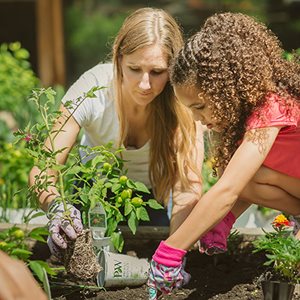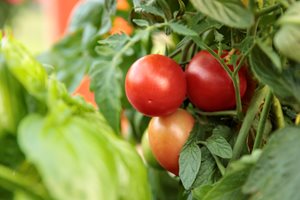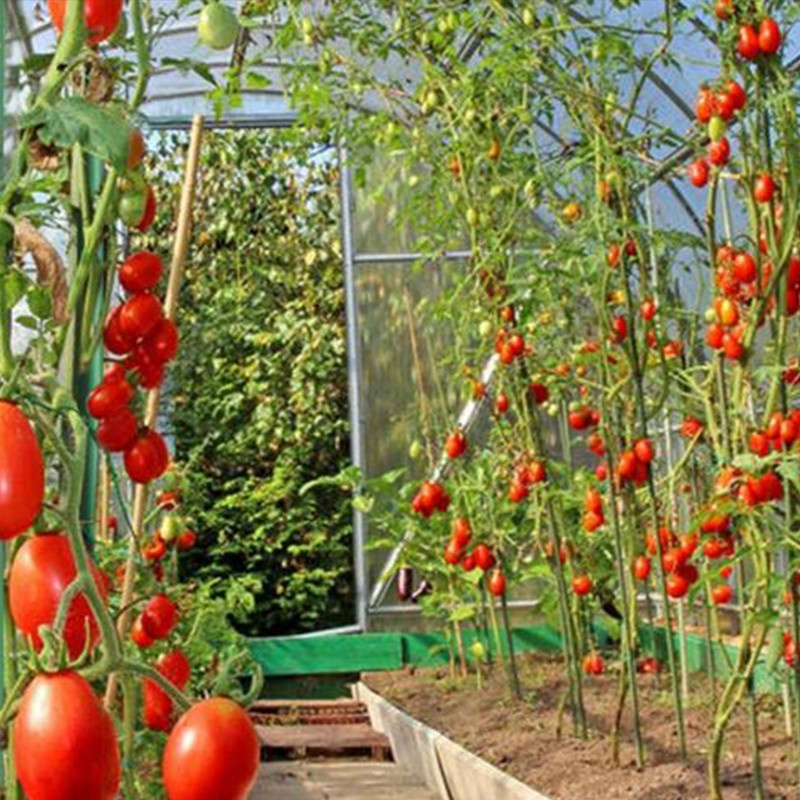When to plant tomatoes:
Tomatoes will fail to thrive unless temperatures are optimal. Nights should be consistently no lower than 55 degrees F, while soil temperature should be at least 60 degrees. Prolonged heat over 90 degrees F will cause fruit and flower production to halt. Planting before it’s warm enough can result in stunted plants. Planting too late can result in low yields or unripened fruits.
Where to plant tomatoes:
Tomatoes need at least 6-8 hours of full sun, along with plenty of heat to thrive. Rotate the site every year to prevent soil-borne diseases and insect infestations. Tomatoes should not be planted in the same spot where eggplant, peppers, or potatoes have recently been grown. Avoid planting tomatoes near corn or plants in the Brassica and Solanum families.


Planting tomato seedlings or young plants:
Turn garden soil to a depth of 8 inches and amend with rich organic matter. Tomatoes can develop roots along any part of the stem that is submerged under soil. Burying the lower part of the plant will encourage more roots and sturdier growth. Cut off side branches on the part of the stem that will be submerged. Add a 1- to 2-inch layer of mulch (organic matter) around plants to conserve water and control weeds.
Tomato plant spacing:
Place larger indeterminate types 3 feet apart. Compact determinate types can be spaced 2 feet apart. Allow 3 feet in between rows.
Starting tomato seeds:
Sow tomato seeds 6-8 weeks before the final frost date in your area. Plant seeds 1/4-inch deep in a seed-growing medium. Keep soil moist and indoor air temperature at 70 degrees F or warmer for germination in 7-14 days.
Planting tomatoes in pots:
Choose a site on a patio, balcony, or deck that gets at least 6-8 hours of direct sun throughout the summer. Use determinate types which will stay smaller. Containers should be at least 5 gallons or larger (12 inches wide and deep) for each plant and have good drainage. Use high-quality potting soil and mix time-release fertilizer into the planting hole.
Containers will need more frequent watering and fertilizing than plants in the ground. Once plants set fruit, fertilize every 1-2 weeks with a balanced liquid organic fertilizer such as fish emulsion.
Support tomato plants
Tomatoes need support stakes. Tomatoes grow taller and have slender stems. One branch can grow 4 to 6 fruits. The branches cannot bear the weight of tomatoes, and support rods are needed to support the weight.
Tomato Stake
FRP stakes, also known as FRP trellis is made from resin, roving, etc. Plant stakes can be either functional or decorative — either way, you want them to be durable. It is anti rust and long life span. Therefore, FRP stakes can save your time and money.
The Fiberglass Stakes offer outstanding durability. They are not as flexible as steel, but they will not rust, break, or fray. You can use these stakes to provide support to new plant stems to grow taller and towards the light.
Multipurpose Universal Use:
Application goes beyond regular use such as tomato stakes, cucumber posts and tree support, agricultural tunnel. Secure your vines, trees, shrubs, tomatoes, pitaya cultivation, ganoderma lucidum cultivation, cucumbers, peppers, perennials, or other garden and flowering plants. Can be used as marker stakes or fence pins.

